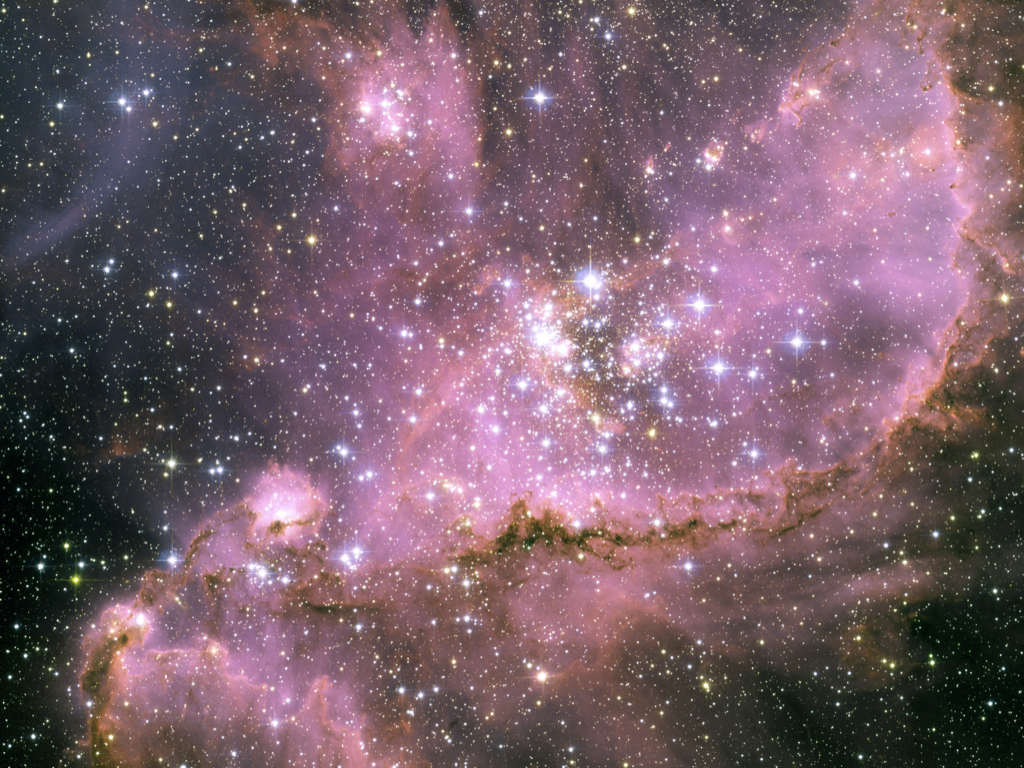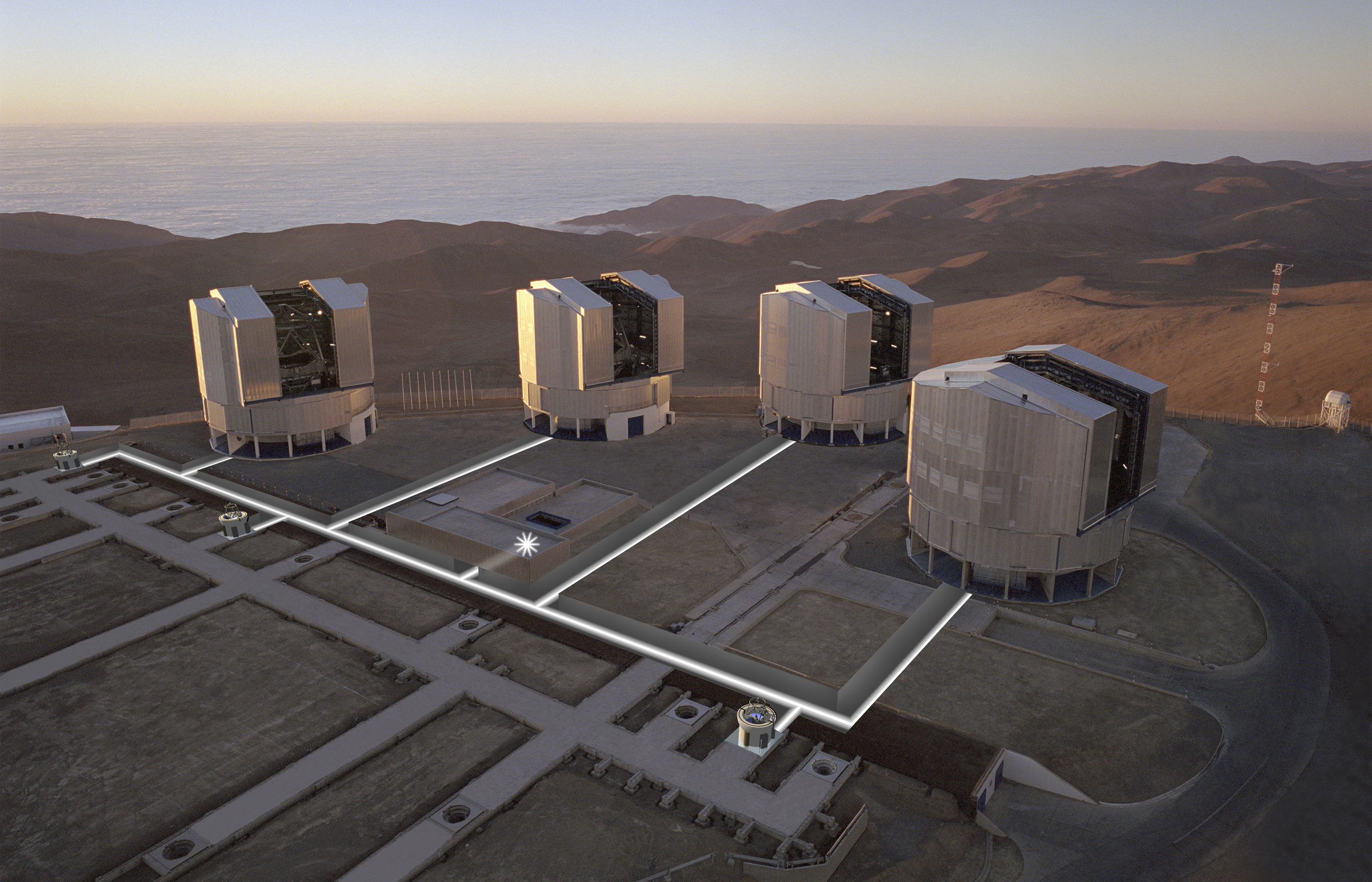Cosmic Creation Model Passes Key Helium Abundance Test
Development of a biblical cosmic creation model ranks as one of the hallmarks of Reasons to Believe’s case for the Christian faith. In that model we maintain that thousands of years ago, the Bible explicitly predicted the following four features of the universe:1
- cosmic beginning that includes the beginning of space and time
- cosmic expansion from the space-time beginning
- unchanging laws of physics
- cosmically pervasive law of decay
These four features undergird what is now known as the big bang creation model. They distinguish the big bang creation model from all other competing models for the universe. Together they imply that the universe must get colder and colder as it gets older and older in a highly predictable way (see figure 1). Also, second only to the predicted cooling of the universe, the most unambiguous and definitive test of the big bang creation model is the primordial (early) abundance of the element helium.

Figure 1: Evidence of Predicted Cooling from the Cosmic Creation Event. The curve is the predicted cooling of the universe according to the biblically described features of the universe where the universe has an age of 13.8 billion years and where there is little variation in the cosmic expansion rate. The dots and error bars are actual temperature measurements of the cosmic microwave background radiation (i.e., radiation remaining from the cosmic creation event) made at different distances or lookback times. The error bar for the measurement at ~7 billion years after the cosmic beginning2 is smaller than the width of the curve. Diagram credit: Hugh Ross
Measuring Primordial Helium
According to the big bang model, the universe begins with just one element—hydrogen. The model predicts that between three to four minutes after the cosmic creation event, 0.24668±0.00061 of the original hydrogen by mass will be fused into helium. This number is derived from the most detailed maps of the cosmic microwave background radiation (a.k.a. the radiation from the cosmic creation event) on the singular assumption that the big bang model is correct.3
The big bang test is whether or not this 0.24668 number agrees with the measured abundance of helium observed in cosmic gas clouds that have seen little chemical contamination since the birth of the universe. Stars, once they form, fuse the primordial hydrogen and helium of the universe into elements heavier than helium and more helium. A good measure of how much helium stars have manufactured and exported into their surrounding gas clouds is the quantity of elements heavier than helium that resides in the surrounding gas clouds. The lower this quantity of heavier-than-helium elements in a gas cloud, the more accurately astronomers can determine the amount of helium added to the gas clouds before any stars began to form in the universe. Hence, astronomers look to ionized gas clouds with the least quantity of elements heavier than helium in their quest to determine the quantity of helium (as a fraction) by mass of the original cosmic hydrogen that existed before stars formed. That is, they are looking for the amount of hydrogen transformed into helium in the first few minutes after the creation of the universe—otherwise known as the primordial helium abundance.
Earlier attempts to measure the primordial helium abundance used high-resolution spectroscopy on a large sample of low metallicity (low quantities of elements heavier than helium) gas clouds to determine the primordial helium abundance. The measurements researchers determined are listed in table 1.
Table 1: Measured Values of Primordial Helium Abundance
research team primordial helium abundance
Izotov et al. (2014)4 0.2551±0.0022
Aver et al. (2015)5 0.2449±0.0040
Peimbert et al. (2016)6 0.2446±0.0029
Fernández et al. (2018)7 0.245±0.007
The use of large samples of gas clouds for the determinations listed in table 1 was made to reduce the statistical errors. However, as several research teams pointed out, “if one is not careful, systematic errors can be more significant for large samples, because low-quality objects/observations are often included.”8 (Systematic errors are possible offsets or multipliers of measurements due to instrumental effects and possible failures to properly calibrate or account for other natural phenomena that could influence the outcomes of the measurements.)
Affirming Measurement in a Gas Cloud
Recently, a team of four astronomers led by Mabel Valerdi sought to minimize systematic errors in determining the primordial helium abundance by observing a single gas cloud that stands dramatically apart from all other gas clouds in affording outstandingly high-quality, unambiguous measurements of the primordial helium abundance.
That gas cloud is NGC 346 (see figure 2). NGC 346 is an exceptionally low-metallicity gas cloud in an exceptionally low-metallicity galaxy, the Small Magellanic Cloud. Residing in the Small Magellanic Cloud, NGC 346 is close enough, just 61 kiloparsecs (196,000 light-years) away,9that it is possible to resolve (distinguish) individual stars in the gas cloud and, thus, avoid their contaminating contributions to the observed nebular gas spectra. NGC 346’s proximity means that “the underlying absorption correction (due to the stellar absorption of the H and He [hydrogen and helium] lines) can be reduced significantly, at least by an order of magnitude.”10 NGC 346 is close enough and large enough that its nebular gas can be observed in several different lines of sight. The bottom line is that there is no other ionized nebular gas cloud that is simultaneously “as close, as large, and with a metallicity as low as NGC 346.”11

Figure 2: Central Part of NGC 346. Image credit: NASA/ESA/(STScI/AURA)
Valerdi and her colleagues used a spectrometer on The Very Large Telescope (see figure 3) in Chile to obtain unprecedented high-quality spectra of several nebular regions of NGC 346. Their spectra revealed that the present elemental breakdown for NGC 346 is 74.65% hydrogen, 25.05% helium, and 0.30% elements heavier than helium. Noting that nuclear fusion in typical stars that populate NGC 346 generates 3.3 times as much (by mass) helium as it does oxygen, Valerdi’s team determined that 97.84% of NGC 346’s present-day helium is primordial. Hence, they found the primordial helium abundance = 0.2451±0.0026.

Figure 3: The Very Large Telescope in the Atacama Desert in Chile. The four telescopes can be used individually or together for enhanced light-gathering power. Each of the four telescopes has an 8.2-meter diameter mirror. Image credit: European Southern Observatory
Valerdi and her colleagues’ measurement of the primordial helium abundance is in remarkable agreement with the value, 0.24668±0.00061, predicted by the big bang creation model. It also agrees remarkably well with the three most recent measurements listed in table 1. It is mildly discordant with the measurement by Izotov et al. However, as the Planck Collaboration explained in one of their papers on the Planck results of mapping the cosmic microwave background radiation, “It is not clear whether the error quoted by Izotov et al. (2014) accurately reflects systematic uncertainties, including in particular the error in extrapolating to zero metallicity.”12
Creation Implications
As stated earlier, the two most unambiguous and definitive tests for the validity of the big bang cosmic creation model are the cooling of the universe and the primordial helium abundance. Atheists don’t embrace the big bang creation model because it makes the universe too young and affirms too much of what the Bible has taught about the physics of the universe. Young-earth creationists don’t appreciate the big bang model because it makes the universe too old. The fact that the big bang creation model has passed these two definitive tests so spectacularly means, whether we embrace it or not, the universe really did arise from a big bang creation event. The Valerdi team’s measurement shows that the more we learn about the universe, the stronger and more pervasive the scientific evidence becomes for the existence of God as Creator, Lord, and Redeemer.
Featured image: NGC 346 in the Small Magellanic Cloud. Image credit: European Southern Observatory
Check out more from Reasons to Believe @Reasons.org
Endnotes
- Hugh Ross with John Rea, “Big Bang—the Bible Taught It First,” Today’s New Reason to Believe (blog), Reasons to Believe, June 30, 2000, https://www.reasons.org/explore/publications/rtb-101/read/rtb-101/2000/06/30/big-bang-the-bible-taught-it-first.
- S. Muller et al., “A Precise and Accurate Determination of the Cosmic Microwave Background Temperature at z = 0.89,” Astronomy & Astrophysics 551 (March 2013): id. A109, doi:10.1051/0004-6361/201220613.
- P. A. R. Ade et al., Planck Collaboration, “Planck 2015 Results. XIII. Cosmological Parameters,” Astronomy & Astrophysics 594 (October 2016): id. A13, doi:10.1051/0004-6361/201525830.
- Y. I. Izotov, T. X. Thuan, and N. G. Guseva, “A New Determination of the Primordial He Abundance Using the HeI λl0830 Å Emission Line: Cosmological Implications,” Monthly Notices of the Royal Astronomical Society445, no. 1 (September 2014): 778–93, doi:10.1093/mnras/stu1771.
- Erik Aver, Keith A. Olive, and Evan D. Skillman, “The Effects of HeI λl0830 on Helium Abundance Determinations,” Journal of Cosmology and Astroparticle Physics 2015 (July 2015): id. 011, doi:10.1088/1475-7516/2015/07/011.
- A. Peimbert, M. Peimbert, and V. Luridiana, “The Primordial Helium Abundance and the Number of Neutrino Families,” Revista Mexicana de Astronomia y Astrofisica 52 (October 2016): 419–24.
- Vital Fernández et al., “Primordial Helium Abundance Determination Using Sulfur As Metallicity Tracer,” Monthly Notices of the Royal Astronomical Society 478, no. 4 (August 2018): 5301–19, doi:10.1093/mnras/sty1206.
- Mabel Valerdi et al., “Determination of the Primordial Helium Abundance Based on NGC 346, an HII Region of the Small Magellanic Cloud,” Astrophysical Journal 876, no. 2 (May 10, 2019): id. 98, 1, doi:10.3847/1538-4357/ab14e4.
- R. W. Hilditch, I. D. Howarth, and T. J. Harries, “Forty Eclipsing Binaries in the Small Magellanic Cloud: Fundamental Parameters and Cloud Distance,” Monthly Notices of the Royal Astronomical Society 357, no. 1 (February 2005): 304–24, doi:10.1111/j.1365-2966.2005.08653.x.
- Valerdi et al., “Determination of the Primordial Helium Abundance,” 1.
- Valerdi et al.,“Determination of the Primordial Helium Abundance,” 1.
- Ade et al., “Planck 2015 Results.” 48.





